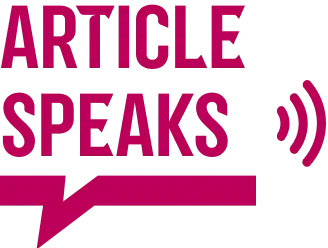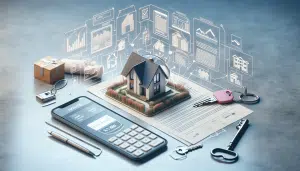What Happens When You Buy a Home With Zero Down
Isabella Lewis November 3, 2025
Curious about zero down payment home buying? Explore how some buyers unlock real estate opportunities without a hefty upfront investment, uncovering what lenders look for, factors that influence eligibility, and the pros and cons of this financing option. Learn about credit considerations, program types, and what to expect before jumping in.
Understanding Zero Down Home Loans
Zero down home loans make homeownership feel accessible, even when savings are tight. Instead of saving for years to build a substantial down payment, some home buyers explore no money down mortgages offered through select lenders. These programs are often tailored for buyers who meet certain requirements—such as military service or purchasing in rural areas. The most common examples include USDA loans for eligible rural properties and VA loans for qualified veterans or active-duty members. Understanding eligibility and loan structure is critical because while zero down means less is needed upfront, other financial responsibilities remain. Key concepts like private mortgage insurance, higher loan amounts, and qualifying criteria shape the journey for buyers using this pathway into real estate.
Traditional home purchases usually require a down payment—often 3% to 20% or more of the purchase price. Zero down payment loans remove this upfront barrier, shifting the focus to buyer creditworthiness, debt-to-income ratios, and potential guarantees from associated agencies. For instance, USDA loans are intended to boost homeownership in less populated communities and come with strict location requirements. VA loans, meanwhile, reward military service with a zero down opportunity and fewer restrictive borrowing costs. While these programs can be game changers for qualifying buyers, not every home shopper or property will be eligible. It’s essential to explore which paths align with financial goals and long-term housing needs.
Homebuyers considering zero down loans must recognize the trade-offs. Lenders sometimes charge slightly higher interest rates or require additional fees to offset risk. Furthermore, zero down payment does not eliminate closing costs, property taxes, or regular maintenance. Buyers need to enter the process with realistic expectations about monthly obligations and the responsibilities of ownership. Despite these factors, thousands take advantage of zero down programs every year, attracted by the chance to build equity and step away from renting. Learning about each available program ensures buyers make informed decisions supported by credible resources and current information (Source: consumerfinance.gov).
Who Qualifies for Zero Down Mortgages
Zero down programs have strict eligibility rules shaped by loan type and provider. The U.S. Department of Agriculture (USDA) offers loans to buyers purchasing homes in designated rural areas, prioritizing household income limits and property location. Veterans, active-duty personnel, and eligible surviving spouses may access VA loans, often classified as one of the most flexible loan types in terms of down payment. Unique to these programs, the federal government guarantees a portion of the loan, minimizing risk for lenders and expanding borrower access even with less cash on hand. This approach not only broadens opportunities but also supports community development in overlooked markets.
Lender requirements go beyond basic eligibility. Applicants must demonstrate stable income, a minimum credit score (usually above 620 for VA and around 640 for USDA), and manageable debt-to-income ratios. VA loans often waive extra private mortgage insurance, keeping costs competitive. Both programs involve documentation, such as proof of service or income verification, plus property appraisals to confirm the home meets program standards. Navigating the paperwork may seem daunting, but many lenders offer guides and checklists to keep buyers informed and organized throughout the process (Source: va.gov).
Eligibility is just the starting point. Buyers must weigh additional factors: Will the property serve as a primary home? Do local housing prices fit USDA or VA loan limits? Has the buyer prepared for ongoing mortgage payments and ownership expenses? Realistically assessing these elements ensures participation in zero down programs is not just possible but sustainable long-term. Housing counselors and nonprofit organizations also provide neutral guidance for those unsure about their options, helping buyers spot potential roadblocks before submitting an application.
Comparing Zero Down Loan Types
Zero down payment mortgages primarily fall into two main categories: USDA and VA loans. USDA loans are available only in approved rural locations and come with maximum income ceilings designed to promote accessibility. VA loans, in contrast, do not restrict property location and waive income limits, instead basing approval on military service status. Other mortgages, including FHA or certain conventional options, typically require some down payment, even if as little as 3%.
The structural differences extend to costs and features. For example, USDA loans carry a guarantee fee—this cost is wrapped into the regular mortgage payment. Private mortgage insurance, common in low-down-payment lending, may not apply to all VA loans, reducing monthly outlays. Interest rates and loan terms depend on the lender, borrower profile, and current market environment. Buyers often compare both short- and long-term expenses, using rate calculators or lender-prepared amortization tables to estimate affordability (Source: usda.gov).
Buyer experience and support structures vary greatly between programs. Direct support is limited with traditional mortgages but more robust for USDA and VA paths, with counseling, resources, and post-purchase assistance often available. Understanding distinctions between program types is crucial because each addresses distinct populations and property needs. For some, a USDA or VA loan is a fast track to homeownership. For others, a traditional mortgage with a small down payment and lender-paid assistance may be a better fit. Each option should be researched thoroughly to ensure smooth financing.
Credit Scores, Debt Ratios, and Approval
Credit history and debt obligations play pivotal roles in zero down home loan approval. Lenders scrutinize a borrower’s credit score for evidence of consistent, timely payment behavior, as this predicts future risk. Generally, higher scores expand options and can lead to lower interest costs. Debt-to-income (DTI) ratio—calculated by dividing monthly debt by monthly income—also matters. Most lenders look for DTI below 43%, although some programs evaluate the overall credit picture in context.
Savvy buyers who lack a perfect score often strengthen their profiles by paying off credit card balances, limiting new accounts, and reviewing credit reports for errors before applying. Improving a credit score even by a small margin can increase loan approval chances or yield more favorable terms. Additionally, programs like VA loans sometimes allow for compensating factors. A strong employment record or higher savings balance, for example, may offset borderline credit scores or DTIs.
Maintaining good credit is important throughout the buying process. Lenders often perform a final credit check before closing a home loan. Any major changes—such as late payments or taking on new debt—can jeopardize approval. Buyers should avoid financing large purchases, switching jobs, or skipping payments while waiting to close. Reliable documentation and open communication with the lender further ensure that no surprises appear during underwriting.
Potential Risks and Drawbacks
While zero down home loans have benefits, buyers should approach them with awareness. One major consideration is higher monthly payments. With no down payment, the entire purchase price is financed, raising principal and interest costs. Furthermore, any market downturn could leave new homeowners owing more than their house is worth—a phenomenon known as negative equity. This makes it difficult to sell or refinance before property values recover (Source: consumer.ftc.gov).
Zero down loans may also include additional fees, such as upfront guarantee or funding fees that conventional buyers do not pay. Some programs cap the amount that can be financed or limit eligible property types. Rural homes may require repairs to meet USDA standards, while VA properties must clear service-related inspections. These requirements can delay closing or increase costs unexpectedly. Planning for possible complications helps buyers stay in control if unanticipated expenses arise.
The dream of affordable homeownership shouldn’t eclipse financial caution. Responsible buyers factor in not just the mortgage, but property taxes, insurance, utilities, and home maintenance. Creating a realistic budget before starting the process is key. Consulting with a trusted housing counselor or nonprofit financial educator enables buyers to create emergency funds and develop a sustainable financial plan—a critical step for long-term stability and peace of mind.
Preparing for Zero Down Home Purchase Success
Preparation and research lay the groundwork for zero down home ownership. The journey starts with understanding mortgage products, eligibility requirements, and lender expectations. Buyers are encouraged to review their credit history, pay off high-interest debts, and collect required documents. Thorough knowledge of program rules can smooth application timelines and reduce last-minute surprises. Real estate professionals, counselors, and trusted nonprofit resources offer reliable support and explain the specifics of each program offered in a given community.
Proactive home shoppers often attend homebuyer education classes—sometimes required by lenders—to gain insights into budgeting, negotiations, and home selection. Preparing for a home inspection and understanding the condition of the property before making an offer helps prevent unforeseen maintenance costs. The dream home should match not only the buyer’s wishlist—but also their financial reality, taking into account projected repairs and regular ownership expenses (Source: hud.gov).
Success goes beyond closing alone. After moving in, buyers maintain their investment by building a reserve fund for surprise expenses and avoiding excessive new debts. Ongoing education is available through nonprofit housing agencies and online resources, empowering owners to navigate home repair, insurance renewals, property tax changes, and possible refinancing opportunities. Steady habits and preparation allow new homeowners to maximize the benefits of their zero down purchase for years to come.
References
1. Consumer Financial Protection Bureau. (n.d.). What is a down payment on a home? Retrieved from https://www.consumerfinance.gov/ask-cfpb/what-is-a-down-payment-on-a-home-en-136/
2. U.S. Department of Veterans Affairs. (n.d.). VA home loans. Retrieved from https://www.va.gov/housing-assistance/home-loans/
3. U.S. Department of Agriculture. (n.d.). Single-family housing guaranteed loan program. Retrieved from https://www.rd.usda.gov/programs-services/single-family-housing-programs/single-family-housing-guaranteed-loan-program
4. Federal Trade Commission. (n.d.). Mortgage closing costs. Retrieved from https://www.consumer.ftc.gov/articles/0217-mortgage-closing-costs
5. U.S. Department of Housing and Urban Development. (n.d.). Housing counseling. Retrieved from https://www.hud.gov/program_offices/housing/sfh/hcc
6. Consumer Financial Protection Bureau. (n.d.). What is a debt-to-income ratio? Retrieved from https://www.consumerfinance.gov/ask-cfpb/what-is-a-debt-to-income-ratio-en-1931/







